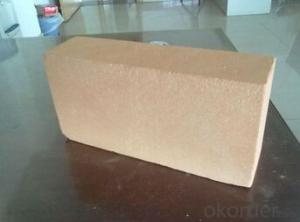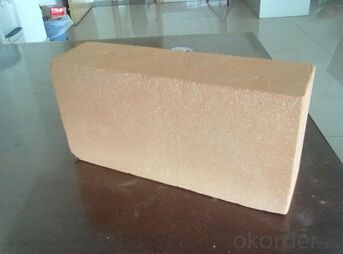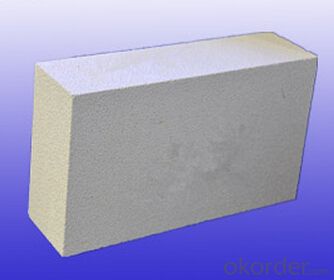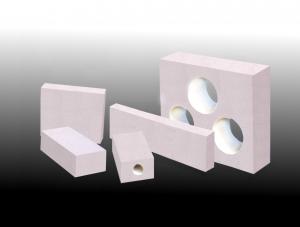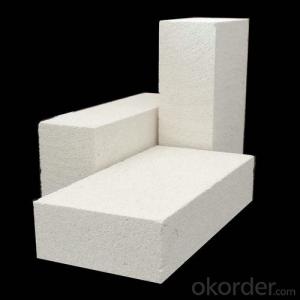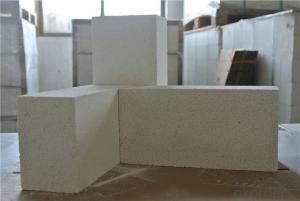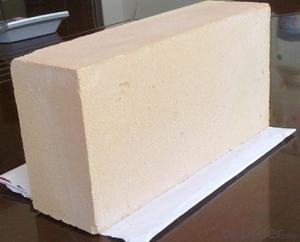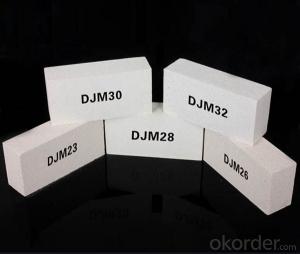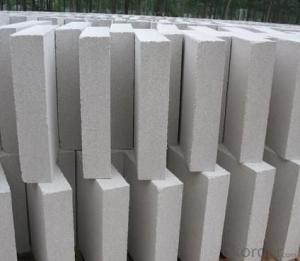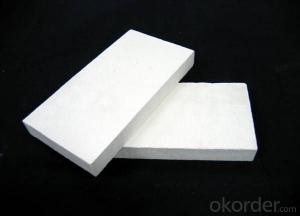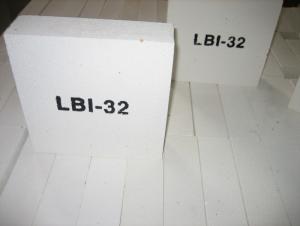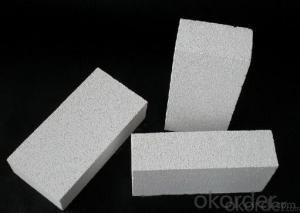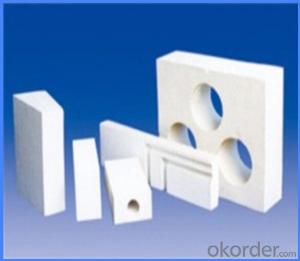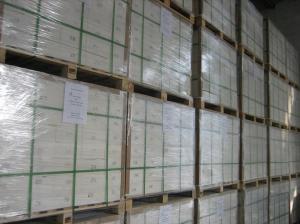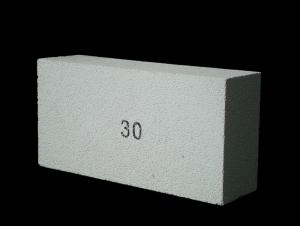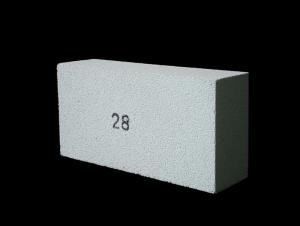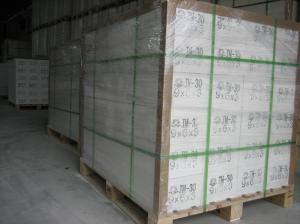Insulating Fire Brick - Refractory JM Mullite Insulation Brick ZDC-28
- Loading Port:
- Shanghai
- Payment Terms:
- TT OR LC
- Min Order Qty:
- 10 m.t.
- Supply Capability:
- 1000 m.t./month
OKorder Service Pledge
OKorder Financial Service
You Might Also Like
Refractory mullite insulating refractory brick JM 23
Okorder series heat insulation brick
Okorder series thermal insulation brick is an effective, energy saving, low carbon, environmental protection advanced, according to the ASTM standard manufacturing products. Okorder series products are best Li Ning and insulation in all types of industrial furnaces in the metallurgical field, aluminum, petrochemical, electric power and glass ceramic materials. They can be used as part of the working layer of thermal insulation or non - melting. Products have been widely used in the following furnace, achieved satisfactory results.
Application of heat preservation brick
Metallurgical Industry: blast furnace, hot blast furnace, heating furnace, etc..
Petrochemical Industry: ethylene cracking furnace, hydrogen production furnace, primary reformer, heating furnace, etc..
Ceramic industry: roller kiln, kiln, etc..
Glass industry: glass furnace regenerator, etc.
Carbon industry: carbon furnace, etc..
Aluminum electrolysis industry: aluminum reduction cell, etc.
Other industries: tunnel kiln, shuttle kiln, etc..
Advantages of heat insulation brick
Low thermal conductivity: more porosity will bring good thermal insulation effect, energy saving.
High crushing strength: high crushing strength, volume stability.
Low heat storage: small heat storage to absorb more heat, energy-saving effect is obvious.
Gao Chundu: iron, alkali metal impurity content is low.
The precise size: Brick size processing precision, special shape cutting and grinding, accelerate the brickwork.
Insulating brick picture
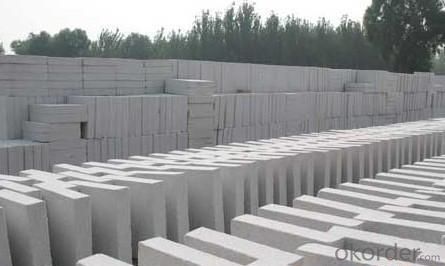
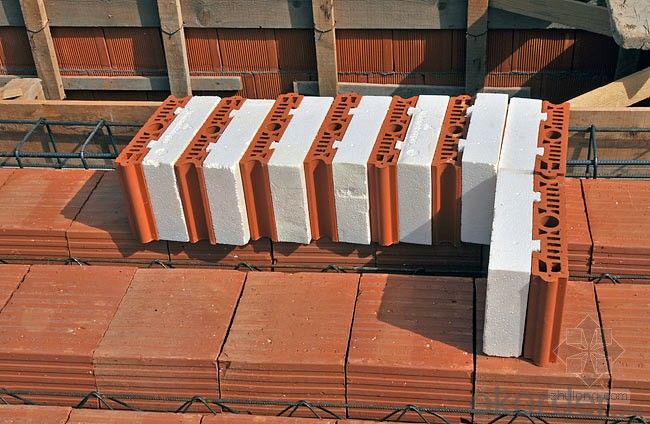
Common problem solutions
1. What products do you have?
We have all kinds of refractory bricks, refractory casting materials, mortar, cement, ceramic fiber products, etc..
Or you can browse our products to choose what you need.
2. How to control product quality?
With strict quality control system throughout the material selection and production process, we have the quality of refractory materials and ceramic fiber products to meet customer requirements.
From the selection of raw materials, the quality of our control to start. The quality certificate of the raw material is required, each batch of the products are to be tested in the use of the forward line. In the production process, the quality control by the workers, and then each piece of classification, and through the quality supervision and inspection.
3. Can you give me a brief introduction to the application of your product?
My company is mainly engaged in refractories in the steel, cement, glass, ceramics, petrochemical, electric power and other industries.
4. What information do you need if I need you?
In order to select the right products, we will provide us with information, such as the United States, technical data, order quantity, product application, etc..
If you have any questions, please contact us.
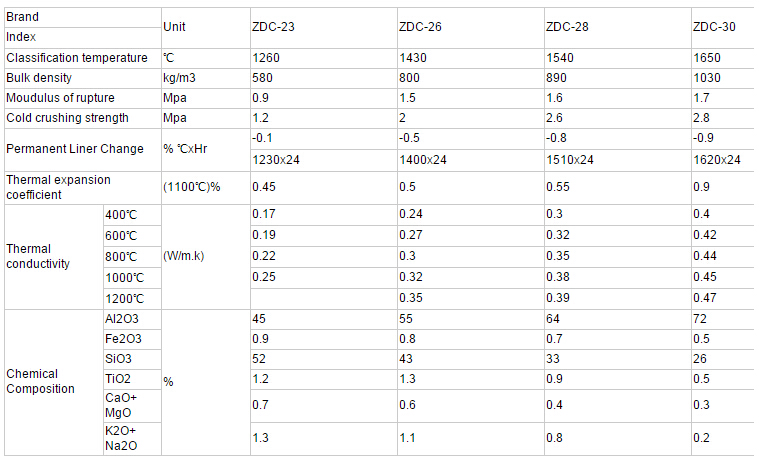
- Q: What is a JQK composite lightweight thermal insulation brick?
- It is a cement based composite waterproof mortar which is pressed and molded. The material has good heat preservation effect and high thermal conductivity.
- Q: Can insulating fire bricks be used for outdoor applications?
- Insulating fire bricks can be used for outdoor applications, but it is important to consider their limitations and suitability for specific purposes. Insulating fire bricks are designed to provide excellent thermal insulation, making them ideal for applications where heat retention is crucial. They are commonly used in high-temperature environments such as kilns, furnaces, and fireplaces. However, when using insulating fire bricks outdoors, some factors need to be taken into account. Firstly, insulating fire bricks are not as durable or weather-resistant as regular bricks. They are more susceptible to damage from moisture, freezing temperatures, and exposure to the elements. Therefore, they may not be the best choice for applications that require long-term durability or frequent exposure to rain, snow, or extreme weather conditions. Additionally, insulating fire bricks have lower compressive strength compared to regular bricks, which means they may not be suitable for structural applications that require high load-bearing capacity. They are better suited for non-load-bearing applications such as insulation, lining, or cladding. In conclusion, while insulating fire bricks can be used for outdoor applications, it is important to carefully evaluate their limitations and choose them for the right purposes. It is recommended to consult with experts or suppliers to determine the suitability of insulating fire bricks for specific outdoor projects.
- Q: Are insulating fire bricks suitable for use in coke ovens?
- Insulating fire bricks are not suitable for use in coke ovens. Coke ovens require bricks that can withstand extremely high temperatures and harsh chemical environments. Insulating fire bricks are designed to provide thermal insulation and are not able to withstand the heat and chemical exposure that occurs in coke ovens. Therefore, it is crucial to use refractory bricks specifically designed for coke ovens, which have high resistance to temperature, chemical attacks, and thermal shock. These refractory bricks are typically made from materials such as silica, alumina, and carbon, which can withstand the harsh conditions inside the coke ovens.
- Q: Can insulating fire bricks be used in electric furnaces?
- Yes, insulating fire bricks can be used in electric furnaces. These bricks are specifically designed to withstand high temperatures and provide excellent insulation, making them suitable for use in electric furnaces where heat retention is crucial.
- Q: Can insulating fire bricks be used as a backup insulation material?
- Yes, insulating fire bricks can be used as a backup insulation material. Insulating fire bricks are designed to have low thermal conductivity, which means they are effective at reducing heat transfer. This makes them suitable for use as a backup insulation material in applications where maintaining temperature stability is crucial. They are commonly used in industrial furnaces, kilns, and other high-temperature environments where the primary insulation material may fail or need additional support. Insulating fire bricks can provide an extra layer of insulation, helping to prevent heat loss and improve energy efficiency. Additionally, they are durable and able to withstand high temperatures, making them a reliable choice for backup insulation.
- Q: Are insulating fire bricks resistant to ultraviolet (UV) radiation?
- Insulating fire bricks usually lack resistance to ultraviolet (UV) radiation, which can lead to the deterioration and discoloration of materials, particularly those not specifically engineered to endure it. The main purpose of insulating fire bricks is their high temperature resistance and insulation properties, rather than their capacity to withstand UV radiation. Consequently, if exposed to long-term UV exposure, insulating fire bricks may undergo reduced performance, cracking, or deterioration. To ascertain the precise UV resistance of insulating fire bricks, it is crucial to refer to the manufacturer's specifications or guidelines, as certain manufacturers may provide specialized products with greater UV resistance.
- Q: Can insulating fire bricks be custom-made?
- Yes, insulating fire bricks can be custom-made. Insulating fire bricks are typically made from lightweight materials such as vermiculite, perlite, or refractory fibers, which can be easily molded into various shapes and sizes. This flexibility allows manufacturers to create custom-made insulating fire bricks to meet specific requirements and applications. Customization options may include variations in dimensions, thermal conductivity, compressive strength, and density. By tailoring the composition and design of insulating fire bricks, they can be optimized for specific temperature ranges, insulation requirements, and environmental conditions. Therefore, customers can work with manufacturers to develop custom solutions that best suit their unique needs.
- Q: Are insulating fire bricks suitable for use in lime kilns?
- Yes, insulating fire bricks are suitable for use in lime kilns. They have high insulating properties that help to maintain high temperatures inside the kiln while minimizing heat loss. This is important for efficient lime production. Additionally, insulating fire bricks are resistant to the corrosive nature of lime, making them a durable and reliable choice for lime kilns.
- Q: Are insulating fire bricks resistant to hydrofluoric acid?
- Yes, insulating fire bricks are resistant to hydrofluoric acid.
- Q: Can insulating fire bricks be used for insulation in steam pipes?
- Yes, insulating fire bricks can be used for insulation in steam pipes. They are designed to withstand high temperatures and provide excellent thermal insulation, making them suitable for this application.
Send your message to us
Insulating Fire Brick - Refractory JM Mullite Insulation Brick ZDC-28
- Loading Port:
- Shanghai
- Payment Terms:
- TT OR LC
- Min Order Qty:
- 10 m.t.
- Supply Capability:
- 1000 m.t./month
OKorder Service Pledge
OKorder Financial Service
Similar products
Hot products
Hot Searches
Related keywords
